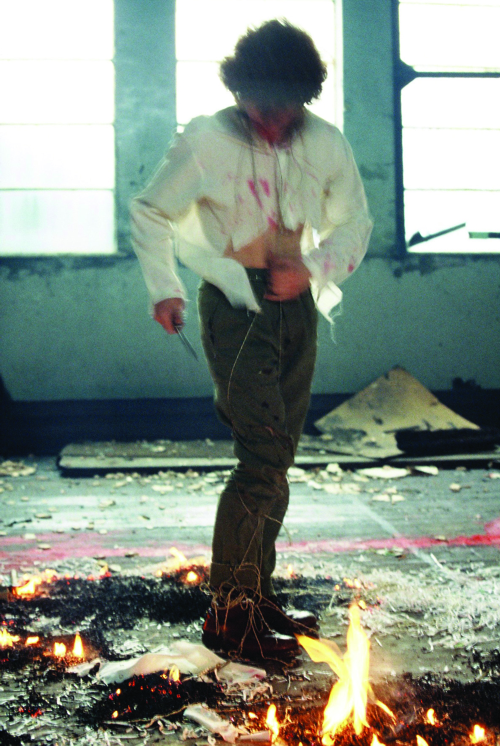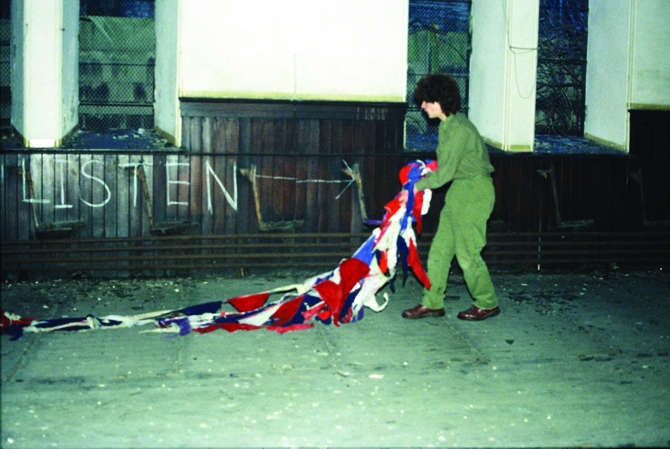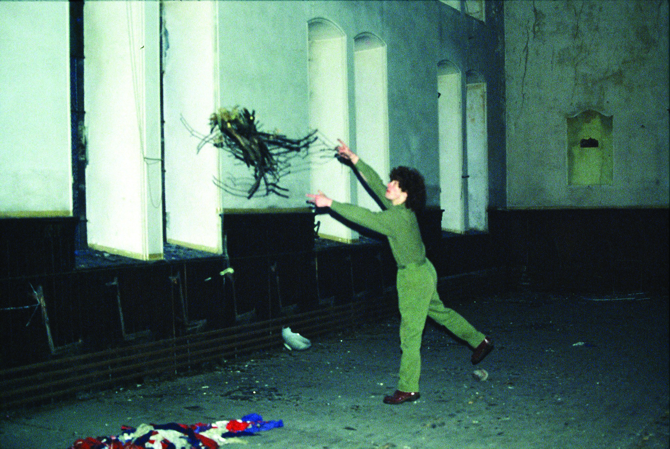
The Church Akshuns
© By André Stitt
I spent over a year working in an abandoned and derelict church in my family neighbourhood in Belfast. In my work at the church at this time I had begun to experiment with ritualistic actions; my interest in utilising them was as part of a holistic process; to heal the psychological damage inflicted by the violent situation and conditioned or codified curcvumstanbecs of living in a warzone. This series of ‘akshuns’ at ‘the Church’ allowed me to formulate a language of materials and strategies for working through site-specific ideas focused on the use of ritual behaviour and cathartic experience. Thereafter these site-responsive works formed the basis of my performance art activity and identity as an artist for the next 30 years.
I started consciously exploring, inventing and developing ‘personal’ rituals that would, I hoped, lead me to some form of catharsis, understanding, and realisation, possibly a transcendence of my own conditioned (Protestant) identity. Through making these initial ‘ritual akshuns’ I identified ritual activity as a means of redressing the limitations of social structure. I identified it as a form of non-conformist art via ritual performance.
The referral to the immediate environment was not an obvious statement, it was a series of layers, how you identify some one as part of the community, the situation I lived in was about a series of layers, how you identify a person, whether they are friend or enemy, how you identify with the urban environment of Belfast, how you interact to people on then street, my awareness was heightened and that was intrinsic to being a person in that environment, the rituals weren’t specific, I did not go into the church thinking I was going to look at one topic, it was never like that, it was about a series of layers and exploring through those layers, making art is not about making a bunch of statements, I could just get on a soap box and say what I think, it was very much about exploring material, can a colour have a symbolic meaning, of coarse it can, red, white and blue, colour of the British flag, colour of loyalist culture, then that is worked in to each action, maybe I have that in my pocket, my be not, in that church I found some bunting, flags that go around a marquee, these became part of various actions, all the material I used in the church and I brought stuff in, I was creating layers in the church, something was installed, it became a moving and living work, paint was peeling off, the roof was coming in, it was a complete art work, I can now take a piece of work like the ‘Institution’ in chapter and see links to the stuff from the church, I had very strong experiences acnes and that continues to follow through, there was nothing explicit. I must say afterwards I always felt brilliant, it was like reconditioning, I felt relief, like it was a weight coming out of me; I felt incredible freedom. When I look at the images of those akshuns I can really see the power they instilled in me. I had an image digitised recently of one of the akshuns entitled ‘Scars’ where I was cutting and marking my body. It’s an image of me at 7.00am in the church making this walk in the cold along this red pigment, naked, by walking along the line the pigment was being rubbed in for several hours but what you see in the digitised version, you can actually see my breath. I hadn;’t seen that on the 35mm slide before and when I saw that it transported me back to that situation.



Artwork Copyright: STITT Akshun Archive
